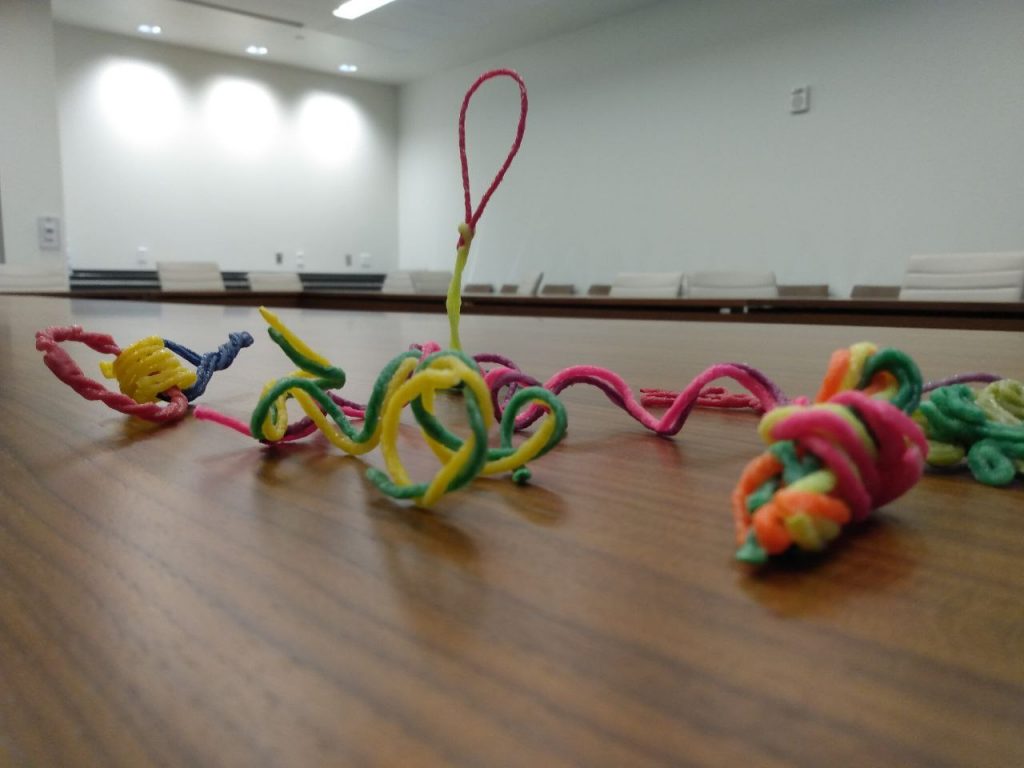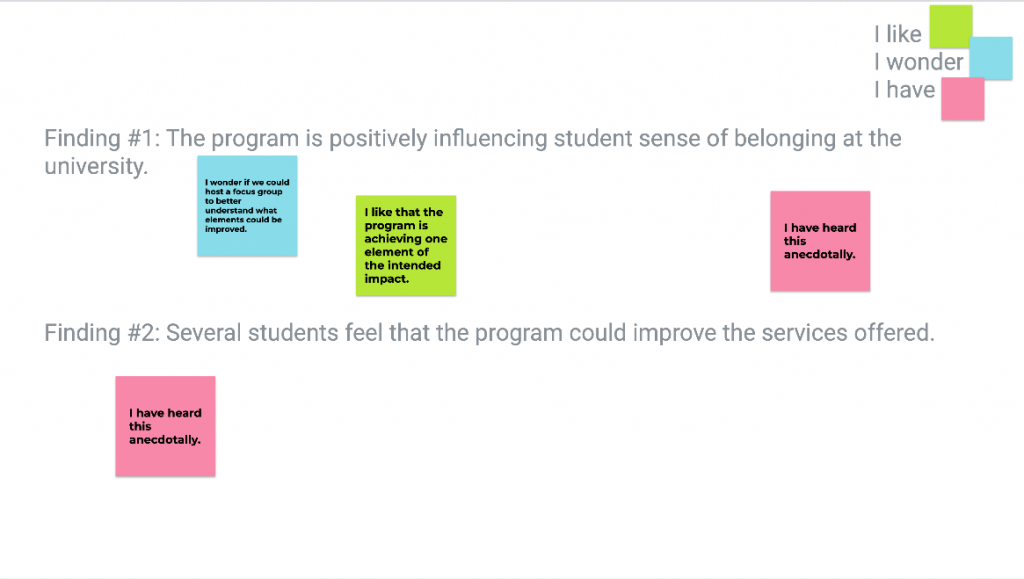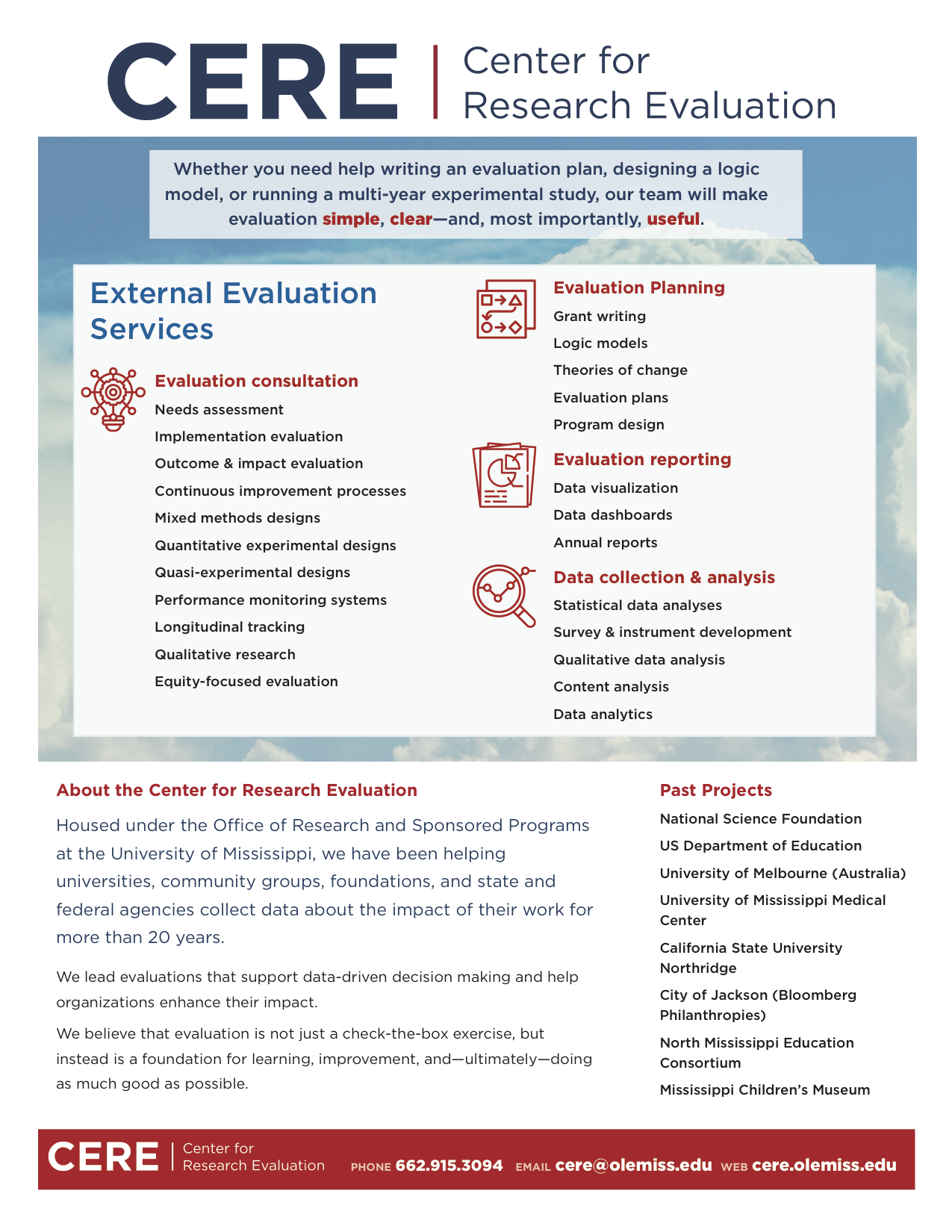
Facilitation Tools for Evaluation – Part 1
By Rachel Scott
As evaluators we are called to “act with urgency to help transform the systems, policies, and practice that have created today’s challenges, and help build toward a more equitable, sustainable future” (AEA Evaluation 2022). However, sometimes we are left wondering how to start this process. With so many voices that need to be heard, how can we be mindful to intentionally value and respect diverse perspectives in doing the work of evaluation? How do we encourage partners to become active participants in evaluation?
I have sought to answer those questions by growing evaluation skill in facilitation techniques. During the past year, I have led several workshops focused on facilitation protocols to help evaluators and organizations collect data, interpret data, and contemplate how to use data to make positive change. To build confidence in facilitation skills and techniques, I focus on building workshop agendas that emphasize active participation and dialogue.
Protocol 1: Miniature Sculptures
One protocol that I frequently use to encourage reflection on perception of a topic is Miniature Sculptures. This can happen with several different mediums – paperclips, pipe cleaners, or my favorite… Wiki Stix. For example, I provide the prompt: Create a miniature sculpture that expresses your thoughts on [insert topic]. Participants then have 3 minutes to create their work of art. As a follow-up, I also ask them to use three words that capture the intent of their sculpture. Participants are then asked to share out, explaining their sculpture and why they selected their three-word description. Some examples are below:
Participants enjoy this protocol because it is active and allows for creative expression. I like this protocol because it immediately engages attendees and reduces tension related to discussing data.
Protocol 2: Critical Friends
Another protocol that I frequently use is Critical Friends. This is a protocol that I was first exposed to during my time as an educator supporting project-based learning. In this protocol, participants listen to a short overview of a program/project/intervention, then provide feedback using the prompts of “I like…”, “I wonder…”, and “I have…”. It is combined with a gallery walk to provide feedback on multiple ideas as small groups can rotate through posters sharing their feedback on post-its.
Participants enjoy this protocol because it gives them a structured format for providing feedback. It can be overwhelming when you ask participants for their input without any parameters, especially when they may not have been asked to share their perspective in the past. I like this protocol because it is so versatile. I can use it with a small group or a room full of people. I have also adapted it to use in virtual workshops with Jamboard.
Additional Resources
These are just two of the protocols that I frequently share when encouraging others to use facilitation protocols to support evaluation work. If you are interested in learning more, the School Reform Initiative is a great resource. They maintain a database of protocols available in multiple languages and searchable by keyword tags.






